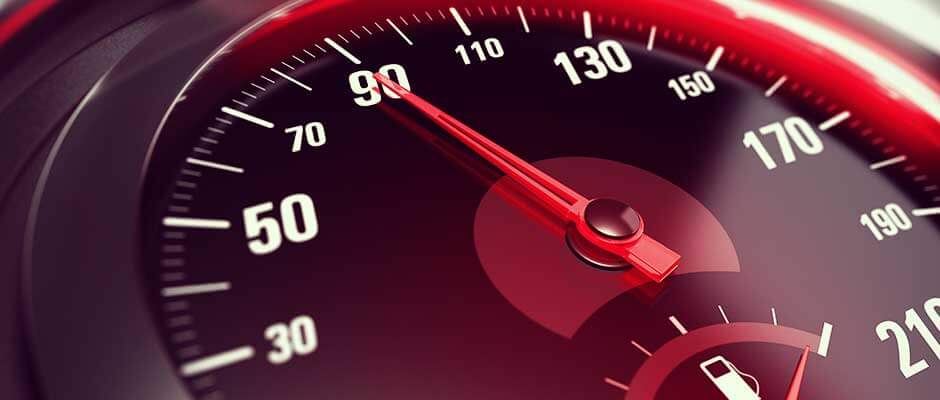Speeding is one of the main factors in fatal road accidents. Fact: in 2014, exceeding the speed limit was reported for 17% of fatalities. All drivers know they shouldn’t speed, yet it is still extremely prevalent on UK roads.
A recent study by the IAM Group has found that over the last decade, speeding is still the biggest motoring-related offence where the defendant is found guilty in court. The numbers of those found guilty have risen sharply in the past year – from 115,935 to 148,426, which is the highest number since 2005.
Why do people speed?
Speeding is not limited to a small minority of reckless drivers. There are many reasons that may cause any driver to speed, such as:
- Drivers breaking the speed limit can intimidate other drivers who are within the speed limit by tailgating them. This may cause the slower driver to increase their own speed to give themselves more space.
- With the stresses of modern life, people are often rushed and travelling to places in a hurry.
- Not being aware of the speed limit of the road they’re driving on, or not realising the speed limit has changed when they start driving on a different type of road
- Young drivers are more likely to speed due to peer pressure from other passengers.
Speed limits
If you drive faster than the speed limit for the type of road and your type of vehicle, then you are breaking the law. The minimum penalty for speeding is a £100 fine and 3 penalty points added to your licence.
[symple_toggle title=”Did you know?”]Your licence will get revoked if you get 6 or more penalty points within 2 years of passing your test. This means you would have to apply for a new provisional licence, and pass both the theory and practical parts of the driving test again to get a full licence.[/symple_toggle]
However it’s important to point out that the speed limit is a maximum, not a target. You should drive at a speed that is appropriate for the road and conditions you are travelling in. For example, just because the speed limit on a country road is 60 mph, it doesn’t necessarily mean that it’s safe to drive at that speed. This is especially the case if there is reduced visibility, perhaps due to rain or sharp corners.
Take a look at the new Helpful Hazards campaign by THINK! which encourages drivers to be cautious on country roads:
Even relatively small differences in speed can make a big difference. For example, the risk of death is approximately four times higher when a pedestrian is hit at 40mph than at 30mph.
Remember: speed limits are not always fixed so make sure you keep an eye out for road signs. Motorways often have variable speed limits when traffic volumes are high, which are displayed in a red ring on overhead signs.
Stopping distances
The faster someone is driving, the less time they have to stop. Stopping distance is the total of:
- Thinking distance – the distance travelled while a driver notices a hazard and applies the brakes and;
- Braking distance – the distance travelled while the vehicle comes to a full stop.
The image below illustrates typical stopping distances:

Source: Department for Transport, 2007
I have an insurethebox policy – how does speed affect me?
The black box we fit to your car allows us to record information about your driving including the time of day you drive, your speed, and your total mileage.
Keeping to a sensible speed is one of the five criteria we look at when rating your journeys and calculating your Bonus Miles. When your policy year comes to an end, we will take your Bonus Miles scores into account when calculating your renewal quote. If you’ve proven that you’re a safe driver, you could get a discount when you renew.
Tips for avoiding speeding
- Be vigilant while driving and assess the conditions around you at all times as they may be constantly changing. Lower your speed if conditions become tricky so you have more time to spot hazards.
- If you’re unsure, read the Highway Code to remind yourself of the speed limits for the vehicle you plan on driving and the type of road you’ll be travelling on.
- Always leave plenty of time before setting off on a journey so you won’t have to rush.
- Keep an eye out for speed limit signs and pay attention to all road signs in case there are any changes to the speed limits.
- Try not to feel pressured to increase your speed if another driver is tailgating you. Keep your cool and leave them enough room to overtake you.
- Consider black box insurance as it has been shown to improve driving behaviour. In particular, younger drivers are more likely to take risks (such as speeding) but having a black box often makes them more careful.
